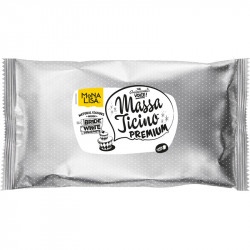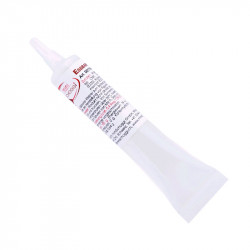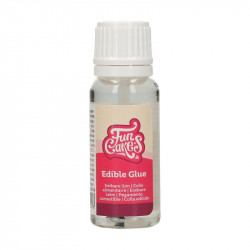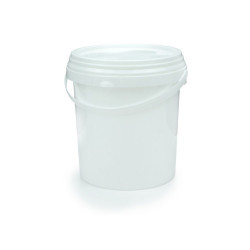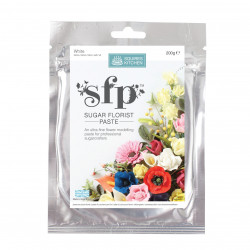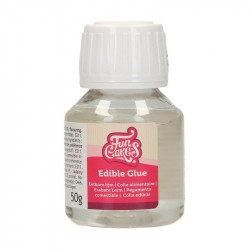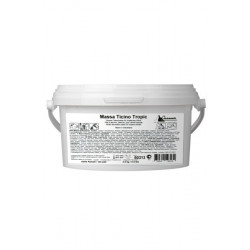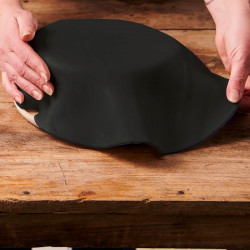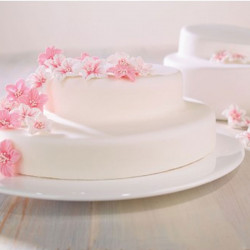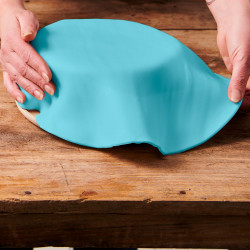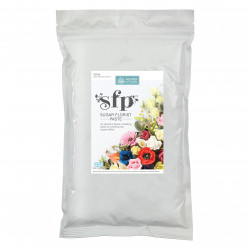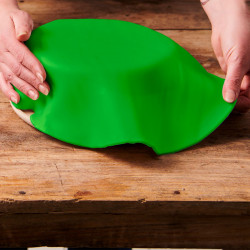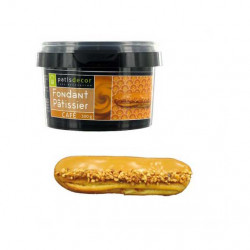-
MenuBack
-
Online Store
-
-
-
-
-
Leer
- Couverture
- Temperature control units
- Aids for chocolate
- Chocolate molds
- Praline fillings
- Chocolate ingredients
- Praline hollow body
- Chocolate colors
- Chocolate tattoos
- Chocolate packaging
- Bean to Bar
- Material for cutting chocolates
- Batons with Kirsch
- Airbrush for chocolate
- High Heels Accessories
- Textured films for chocolate
- Chocolate fountain & fondue
-
-
-
-
-
Kuchen & Torten
- Cakes Fillings & Ingredients
- Fondant & Marzipan
- Cakes tools
- Cake rings
- Silicone molds
- Baking pans for cakes
- Cake stand
- Cakes packaging
- Airbrush for cakes
- Sugar flowers accessories
- Cake Topper & Wedding Figurines
- Cakes dummies
-
-
-
-
-
-
-
-
-
-
-
-
-
-
-
-
-
-
-
-
-
-
-
Füllungen
- Baking chocolate
- Glucose & Sorbitol
- Cocoa beans
- Cocoa nibs
- Monin syrup
- Champagne & Alcohols
- Freeze dried fruits
- Cake & cake glaze
- Flours & baking ingredients
- Chocolate coating & chocolate
- Milk powder
- Granules
- Nuts & Nougat
- Fruit puree
- Creams & Fillings
- Egg yolk & egg white
- Fruit powder
- Special ingredients
- Fondant & Flower Paste
-
-
-
-
-
-
-
- Punching, cutting & embossing
- Mixing bowls & whisks
- Chocolate material
- Thermometer & Burner
- Gloves & Protective Material
- Smoothing & Modeling
- Roll out bar
- Dough scraper & horn
- (Flour) sieves
- Cake turntable
- Spatula & Spatula
- Silicone embossing molds
- Insert strips & cake slices
- Brushes & Tweezers
- Measuring cup
-
-
-
-
-
-
-
-
-
Ausstechformen
-
-
-
-
-
-
-
-
-
Courses
-
-
kurse
- Current courses
- Praline courses
- Chocolate courses
- Chocolate kiss course
- Macaron courses
- Cake courses
- Baking courses
- Patisserie courses
- Ice cream course
- Guetzli, Cookie & Confectionery Courses
- Bread courses
- Pasta courses
- Apéro course
- Cupcakes courses
- Éclair course
- Courses in Zurich - Adliswil
- Children's courses
-
-
- Team Events
- Hen Night
- Retail Store
-
About Us
-
-
-
DirectionsDownload relevant PDF now.
-
-
-
Recipes blog
-
-
Recipes Blog
-
-
-
Shipping and Payment
-
-
Versand/Zahlung/Impressum
-
-
- Online Shop
-
- Novelties
- Sale
- Chocolate and chocolates
- Couverture
- Temperature control units
- Aids for chocolate
- Chocolate molds
- Praline fillings
- Chocolate ingredients
- Praline hollow body
- Chocolate colors
- Chocolate tattoos
- Chocolate packaging
- Bean to Bar
- Material for cutting chocolates
- Batons with Kirsch
- Airbrush for chocolate
- High Heels Accessories
- Textured films for chocolate
- Chocolate fountain & fondue
- Couverture
- Gifts Cards
- Stencils & Stencils
- Cakes & Pies
- Ice cream
- Bread
- Macarons
- Hearty
- Recipe booklets & books
- Cupcakes
- Dessert
- Cake Pops
- Edible decorations
- Fillings & Ingredients
- Glucose & Sorbitol
- Cocoa beans
- Baking chocolate
- Cocoa nibs
- Monin syrup
- Champagne & Alcohols
- Freeze dried fruits
- Cake & cake glaze
- Milk powder
- Flours & baking ingredients
- Chocolate coating & chocolate
- Granules
- Nuts & Nougat
- Fruit puree
- Creams & Fillings
- Egg yolk & egg white
- Fruit powder
- Special ingredients
- Fondant & Flower Paste
- Food Colors
- Auxiliary means
- Spouts & piping bags
- Fondant, marzipan, flower paste
- Bakeware
- Aprons & Potholders
- Cookie cutters
- Season
- Candles
- Party accessories
- Tableware
Fondant & Flower Paste
There are 38 products.
Active filters
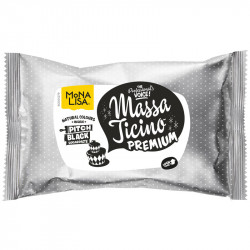
Rolled fondant Massa Ticino Sugarpaste Pitch Black, 250 g
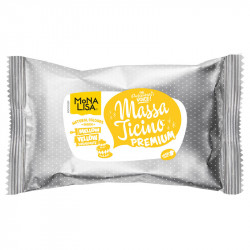
Rolled fondant Massa Ticino Sugarpaste Mellow Yellow, 250 g
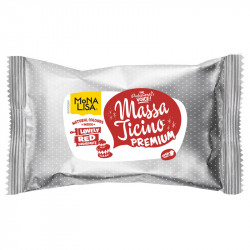
Rolled fondant Massa Ticino Sugarpaste Lovely Red, 250 g
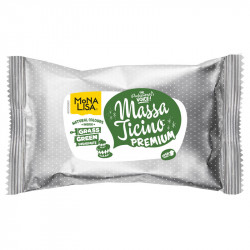
Rolled fondant Massa Ticino Sugarpaste Grass Green, 250 g
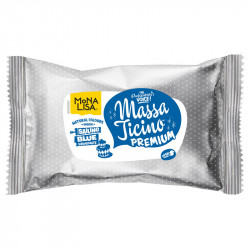
Rolled fondant Massa Ticino Sugarpaste Sailing Blue, 250 g

Roll fondant Massa Ticino Sugarpaste Pretty Pink, 250 g
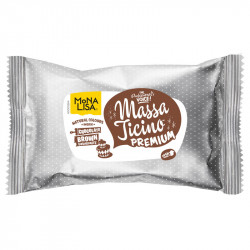
Rolled fondant Massa Ticino Sugarpaste Chocolate Brown, 250 g
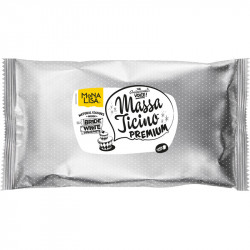
Rolled fondant Massa Ticino Sugarpaste Bride White, 1 Kg
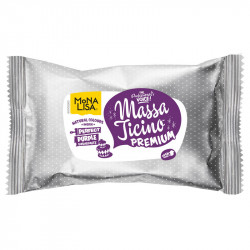
Rolled fondant Massa Ticino Sugarpaste Perfect Purple, 250 g

Rolled fondant Massa Ticino Sugarpaste Vintage Ivory, 250 g
What is fondant?
Fondant is a sugar mass used to decorate cakes and pastries. It consists mainly of sugar, glucose syrup and water. Fondant has a smooth consistency and is easy to roll out to apply to cakes. It can be colored, molded and sculpted to create various designs and figures. Fondant dries after application and forms a solid layer that protects the cake and gives it a smooth finish. It is especially popular for making wedding cakes and other elaborately decorated cakes.
What is flower paste?
Flower paste is a modelable sugar mass, which is specially used for making edible flowers and other decorative elements. It is mainly composed of powdered sugar, CMC (carboxymethyl cellulose), glucose syrup, water and gelatin. Flower paste has a fine texture and is easy to roll out and shape without cracking or breaking. It dries quickly and allows modelers to create detailed and realistic flowers or other decorations that add a professional touch to their cake, cupcake or dessert creations. The finished flowers are edible, hard and durable enough to keep for a long period of time.
What is the difference of fondant and flower paste?
Fondant and flower paste are both sugar masses used in confectionery and cake decorating. Nevertheless, there are some differences between the two:
1. Composition: Fondant consists mainly of sugar, glucose syrup and water. Flower paste (also called modeling paste), in addition to sugar and glucose syrup, also contains CMC (carboxymethyl cellulose) or tylose powder to make it more elastic.
2. Texture and elasticity: fondant is a soft, pliable and elastic mass that can be easily rolled out and shaped. Flower paste, on the other hand, is firmer and more elastic, making it ideal for modeling thin leaves, flowers or other fine details.
3. Drying time: Fondant dries relatively slowly and retains its flexibility for a longer time. Flower paste, on the other hand, dries much faster and hardens completely, which is important for making intricate decorations that need to hold their shape.
4. Application: Fondant is often used to cover cakes and create smooth surfaces. Flower paste is mainly used to make detailed flowers, leaves and other decorative elements.
5. Taste: Fondant has a sweet taste and soft texture. Flower paste, on the other hand, has a neutral taste and is firmer in texture.
Ultimately, the choice between fondant and flower paste depends on the desired use and result. The two are often combined to create complex decorations on cakes.
What do I need to consider when working with fondant?
There are a few things to keep in mind when working with fondant:
1. Preparation: Make sure your work surface and tools are clean and dry.
2. Kneading: Before working with fondant, knead it to make it softer and smoother. Use powdered sugar to prevent sticking.
3. Rolling: Roll out the fondant on a surface lightly dusted with powdered sugar to prevent sticking. Use a rolling pin to roll out the fondant evenly.
4. Shaping: Fondant can be shaped into various forms by cutting it out, shaping it, or sculpting it. Use special cookie cutters or shape the fondant with your hands.
5. Decorating: fondant is good for decorating cakes and pastries. You can color it with food coloring and decorate it with various tools, such as cookie cutters, embossing mats or modeling sets.
6. Storage: Store fondant in an airtight package to prevent drying out. It can also be stored in the refrigerator if needed, but it should be brought back to room temperature before use.
7. Shelf Life: Fondant usually has a shelf life of several months as long as it is stored properly. However, always check the expiration date on the package.
8. Patience: Working with fondant requires patience and practice. Be patient and try to take your time shaping and decorating.
9. Experiment: Have fun working with fondant and experiment with different techniques and designs.
10. Taste: Although fondant looks beautiful, the taste is not for everyone. If your guests don't like the taste, you can use fondant just for decoration and offer a flavorful layer like buttercream under the fondant.
What is the best way to work with flower paste?
To get the most out of flower paste, there are a few basic steps to follow:
1. Preparation: Make sure you have all the tools and materials you need, including a clean work surface, cookie cutters, rolling pin, rolling pin, paintbrush and water.
2. Kneading: Begin by lightly kneading the flower paste to make it soft and pliable. If it is too hard, add a little water. If it is too sticky, sprinkle it with cornmeal or powdered sugar.
3. Rolling: Roll out the flower paste on a lightly floured work surface or between a sheet of baking paper. Make sure the paste is evenly thick, depending on how thick you need it.
4. Cut out and shape: Use cookie cutters or cut out the shapes you want with a sharp knife from the rolled out flower paste. You can also use your hands to form small balls or petals.
5. Modeling: Use tools like ball or flower modelers to add dimension and shape to the flower paste. Place the cut shapes on a foam mat or piece of Styrofoam to keep their shape.
6. Dry: Let the sculpted flower paste shapes harden in a cool, dry place. Depending on the thickness of the mold, this can take anywhere from a few hours to several days. Turn them over occasionally to make sure all sides dry evenly.
7. Decorate: Once the flower paste molds are completely dry, you can decorate them however you like. Use food coloring, edible markers or decorative beads to add details.
8. Storage: Store the finished flower paste molds in an airtight container or plastic wrap to protect them from moisture and keep their shape longer.
By following these steps and getting some practice, you will learn how to best work with flower paste to make beautiful and realistic flowers or decorations.

